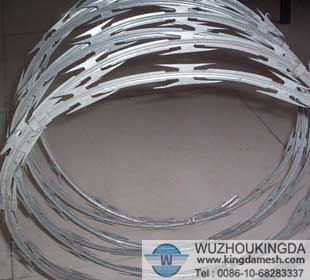How to Run Barbed-Wire Fencing
How to Run Barbed-Wire Fencing
Since the dawn of the pioneers, barbed-wire fences have been used to establish boundaries, keep livestock in and unwanted creatures out. These easy to build, cost-efficient fences are a quick way to mark property lines without emptying the pocketbook. The materials used to build a barbed wire fence are mostly personal preference and can be obtained at any hardware store. In addition to materials, all that is required to run barbed-wire fencing is some physical endurance and a little patience.
Instructions
1 Put on your safety gear. Simple things such as glasses and gloves will prevent you from sustaining an injury which prevents project completion and unwanted visits to a medical facility.
2 Identify the area you would like your fence to run and ensure it is free of obstacles and trees. This area will be called your fence line.
3 Lay your T poles along the fence line evenly distanced from the first post which is called the anchor or corner post. A good unit of measure between posts is between 10 to 12 feet. Any longer than this, your fence will sag over time.
4 Measure each T pole 3 feet from the bottom and, using your marker, make a mark. This will be used to identify the depth each pole needs to be sunk.
5 Pound each pole into the ground with the post driver. A post driver is a capped, cylindrical steel tube that is placed over the pole and used to drive the shaft into the ground. After you have pounded the pole a couple of feet down, check your indicator mark made in Step Three to make sure you have not gone too deep. Be sure when pounding your post into the ground, that your wire clips are all facing the same direction. Once you have come close to your marker, use the hammer to sink the pole that final inch.
6 Anchor your first pole to the second with bailing wire. Starting at the top of your first pole, attach a length of bailing wire around the top of the pole and thread it through the top wire clip. Using your fencing pliers, wrap the end of the wire around itself in a noose-like fashion. Follow the length of the wire to the second post in your fence line and attach this to the bottom of the post in the same fashion as the first attachment. Be sure to apply as much tension as possible when tightening this wire at the top.
7 Anchor the second pole to the first with bailing wire. Starting at the top of your second pole, attach a length of bailing wire around the top of the pole and thread it through the top wire clip. Using your fencing pliers, wrap the end of the wire around itself in a noose-like fashion. Follow the length of the wire to the first post in your fence line and attach this to the bottom of the post in the same fashion as the first attachment. Be sure to apply as much tension as possible when tightening this wire at the top. When complete you should have an 'X' between the first and the second poles.
8 Repeat Steps Six and Seven for the last two poles in your fence line.
9 Build a fence stretcher by drilling holes into your two-by-four at the same distance as the wire clips on the T pole. Take a T pole and lay it on the two-by-four. Mark the location of the wire clips on the wood. Drill your holes and fasten your eye bolts to the board. Don't forget to use washers in between the wood, nuts and bolt heads.
10 Attach your come along to the fence stretcher with bailing wire. Using your fencing pliers wrap the wire around the ends of the stretcher and create a noose-like knot.
11 Thread the barbed wire through the bottom clips on the T poles starting at the end of your fence and working your way to the first anchor post. Attach the end of the wire to the base clip on the anchor post using a fence clamp. Repeat this process until all layers of barbed wire have been placed.
12 Attach the wire to the eyelets on the fence stretcher. Using your chain and come along, hook the fence stretcher to the appropriate latch point on your truck. Drive forward until all of the barbed wire is elevated off of the ground and taught. Carefully disconnect the wire just short of the clip on the T pole and attach a fence clamp. Repeat this for each layer of barbed wire.
13 Repeat the stretching process in Step 12, but using the fence clamps attached to the eyelets instead of the barbed wire itself. If any further adjustments are needed make these at this time. Once you are satisfied with the tension of your fence, attach the fence clamps to the clips on the final T pole.
14 Check your fence regularly for any sagging or breaks. If necessary, trim the ends of your wire and re-stretch your line to improve the integrity of your fence.





